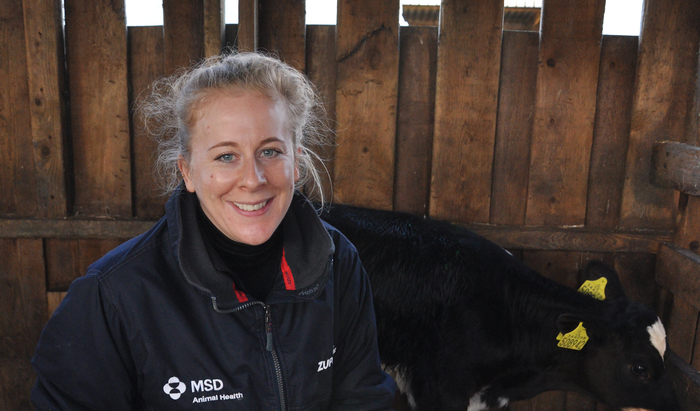Last winter the bacterial organism M.haemolytica was by far the most commonly diagnosed cause of pneumonia in housed dairy calves1. As a result, vets are now urging milk producers to consider vaccinating valuable herd replacements pre-housing this autumn.
“According to recent AHPA surveillance data for England and Wales, pneumonia diagnoses attributed to this common bacterial cause were particularly prevalent in both unweaned and weaned dairy calves over the November 2019 to March 2020 period,” says MSD Animal Health veterinary adviser Dr Kat Baxter-Smith.
“It is important to understand that both viruses and bacteria can cause pneumonia. However, many viral and bacterial respiratory pathogens live harmlessly as part of the normal micro-organism profile of the respiratory tract of healthy cattle. But when a calf’s resistance is reduced as a result of significant environmental challenges – or where there is an overwhelming pathogen load – then animal welfare compromising and financially damaging outbreaks of pneumonia can result,” she explains.
Dr Baxter-Smith adds that whilst you can treat calves showing signs of pneumonia – with antibiotics and non-steroidal anti-inflammatory medications (NSAIDS), for example – preventing performance-limiting permanent lung damage may not be possible.
“Pneumonia is the most common reason for poor performance and death in growing calves2, so immunity-led disease prevention should be the focus for all calf rearers,” she says.
“Sound colostrum feeding practices and vaccination with a multi-valent vaccine that will deliver protection against both common viral and bacterial pathogens can play an important part here; as will effective management of the key disease risk factors.
“Improving the rearing environment, reducing stock density, not mixing age groups, isolating any clinically affected animals, using plenty of fresh bedding and thoroughly disinfecting feeders and drinkers are all other important steps you can take to reduce the chance of pneumonia gaining a foothold in your calf rearing unit,” Dr Baxter-Smith says.


